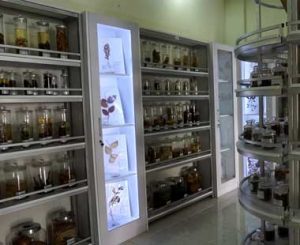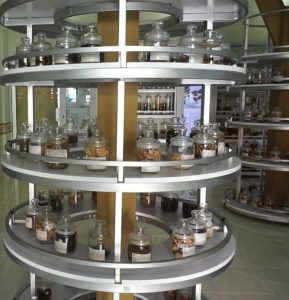Herbarium Tawangmanguensis, The Most Complete Database of Indonesian Medicinal Plants
"What do you think when hearing the word herbarium spoken? A building full of dried, stored, classified plants for botanical research? Then, what is so interesting about a herbarium of medicinal plants and herbs?""Published by : Kurnia HD - 20/05/2020 21:56 WIB
3 Minutes read.
B2P2TOOT collects and researches medicinal plants and jamu from various locations throughout the archipelago. The institution’s researchers have visited locations all over Indonesia. The research is to find what medicinal plants are used by the people in the areas. All were collected, both the data on their use and the medicinal plants themselves. The samples of these medicinal plants were taken to Tawangmangu and further investigated in B2P2TOOT’s herbarium. They named this place Herbarium Tawangmanguensis. This herbarium is the most comprehensive database of medicinal plants in Indonesia and is the only herbarium for medicinal plants in Indonesia.

“There are other herbaria, but plant herbarium in general. There is also a herbarium that specializes in woody plants. But we focus on the herbarium for medicinal plants only. So, the herbarium is the only one in Indonesia. There we collect thousands of plant species that can be seen and still viewed from ethnicity-side (in term of their effectiveness). Yes, but in the future the claim must be proven, “said Akhmad Saikhu
Herbarium Tawangmanguensis is a special herbarium for the collection of medicinal plant specimens, especially the specimen collection from RISTOJA (Research on Medicinal Plants and Herbs). RISTOJA was held in 2012, 2015 and 2017, covering 405 ethnic groups in 34 provinces in Indonesia and collecting approximately 28,000 herbarium specimens of plants. The collection also includes around 200 collections of drinks and herbal medicine, and approximately 300 simplicia (dry ingredients). Everything is also stored in the Jamu Museum.

“In three periods, namely 2012, 2015 and 2017, we carried out the research because we could not do it at the same time related to the budget and human resources who took the data there. Well, that’s where we get information on what formulas are used by the community. Not all of them have scientific data, so we collect them first. In the future, we will examine and prioritize which formulas can be used. If we talk about ramuan (herbs mix), there are more than one. There are 2 ramuan, some are five, there are ten, some even up to tens. And, it’s not all medicinal plants used. Of course, researchers have references in the library, which references can we continue. From it, there are already tens of thousands herbs, there are 30 thousand potions. And not all of them we examine, there are only a few that we categorize. Some time ago we made a kind of scoring for the preparation of any ramuan which we will investigate further. Because it is impossible for us to examine everything, there are priority issues, “added Akhmad Saikhu.
Apart from being stored and researched at B2P2TOOT, the research results are disseminated and conveyed to the public as part of education. There are various forms, through journals, books, leaflets, as well as websites, Facebook and other social media.
“We have twitter, IG, FB, youtube. Now we are following the trend of society 5.0 which is all over the internet. The public has the right to know what we have done and what are the benefits of the results of the training we have done, “concluded Akhmad Saikhu.
The Jamupedia team has also made a video tutorial on 11 scientific herbs from the B2P2TOOT team’s research. You can find them all at Jamupedia TV‘s Youtube! Don’t forget to subscribe!








